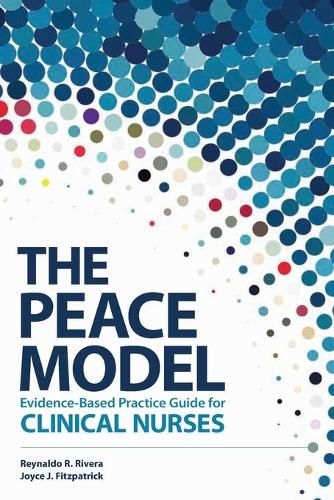The Peace Model Evidence-Based Practice Guide for Clinical Nurses
Reynaldo R Rivera,Rey Rivera

The Peace Model Evidence-Based Practice Guide for Clinical Nurses
Reynaldo R Rivera,Rey Rivera
This title is printed to order. This book may have been self-published. If so, we cannot guarantee the quality of the content. In the main most books will have gone through the editing process however some may not. We therefore suggest that you be aware of this before ordering this book. If in doubt check either the author or publisher’s details as we are unable to accept any returns unless they are faulty. Please contact us if you have any questions.
Nurses are in charge of the patients and their families throughout the hospital and health system experience. They assist patients through illness to achieve higher levels of health. They coordinate the care throughout the patients’ experiences with the healthcare system. Nurses are the leaders of patient care at the bedside and beyond. It is important that as clinical leaders, nurses have the most accurate, most up-to-date, and evidence-based information available so that they can always do the right thing. The PEACE model develops clinical nurses as leaders in care of both patients and their families. Clinical nurses, those at the point of care, have embraced this model for guiding their practice. The PEACE model helps clinical nurses solve challenging problems through a rigorous evidence-based practice process-from problem identification to evaluation and dissemination.
The crux of the PEACE model is the mnemonic that simplifies the evidence-based practice (EBP) process for clinical nurses. The PEACE model is used across NewYork-Presbyterian (NYP), one of the nation’s most comprehensive academic healthcare delivery systems. NYP is composed of 10 hospitals in New York and employs more than 11,000 nurses across the enterprise.
One striking advantage of the model is that it emerged from the work of clinical nurses who were struggling to find a way to remember and apply the components of other EBP models. Clinical nurses have indicated that the components of the PEACE model make the model memorable and useful:
P for problem identification
E for evidence review
A for appraising the evidence
C for changing practice or conducting research
E for evaluating and disseminating the findings
The last stage of the PEACE model is particularly important to advancing nursing practice across institutions. We have found that unless the model results are disseminated through scholarly presentations and publications, the clinical challenges continue to be present across sites and institutions. We emphasize this phase and conduct publication workshops to help clinical nurses shape the dissemination of their EBP work. Nurses’ active participation in EBP and research is critical to improving the care we provide to patients and furthering nursing science. It is important to note that the design of the PEACE model intentionally linked EBP, quality improvement (QI), and research.
The mnemonic PEACE promotes understanding and application by clinical nurses, providing a way to easily remember the EBP component stages. The uniqueness of the PEACE model is its simplicity. This relevance leads to continued application in day-to-day nursing practice. As we strive for peace at many levels of our lives and work, the mnemonic is easy to remember. The PEACE model may be adapted to any setting where nurses practice.
This item is not currently in-stock. It can be ordered online and is expected to ship in 7-14 days
Our stock data is updated periodically, and availability may change throughout the day for in-demand items. Please call the relevant shop for the most current stock information. Prices are subject to change without notice.
Sign in or become a Readings Member to add this title to a wishlist.


